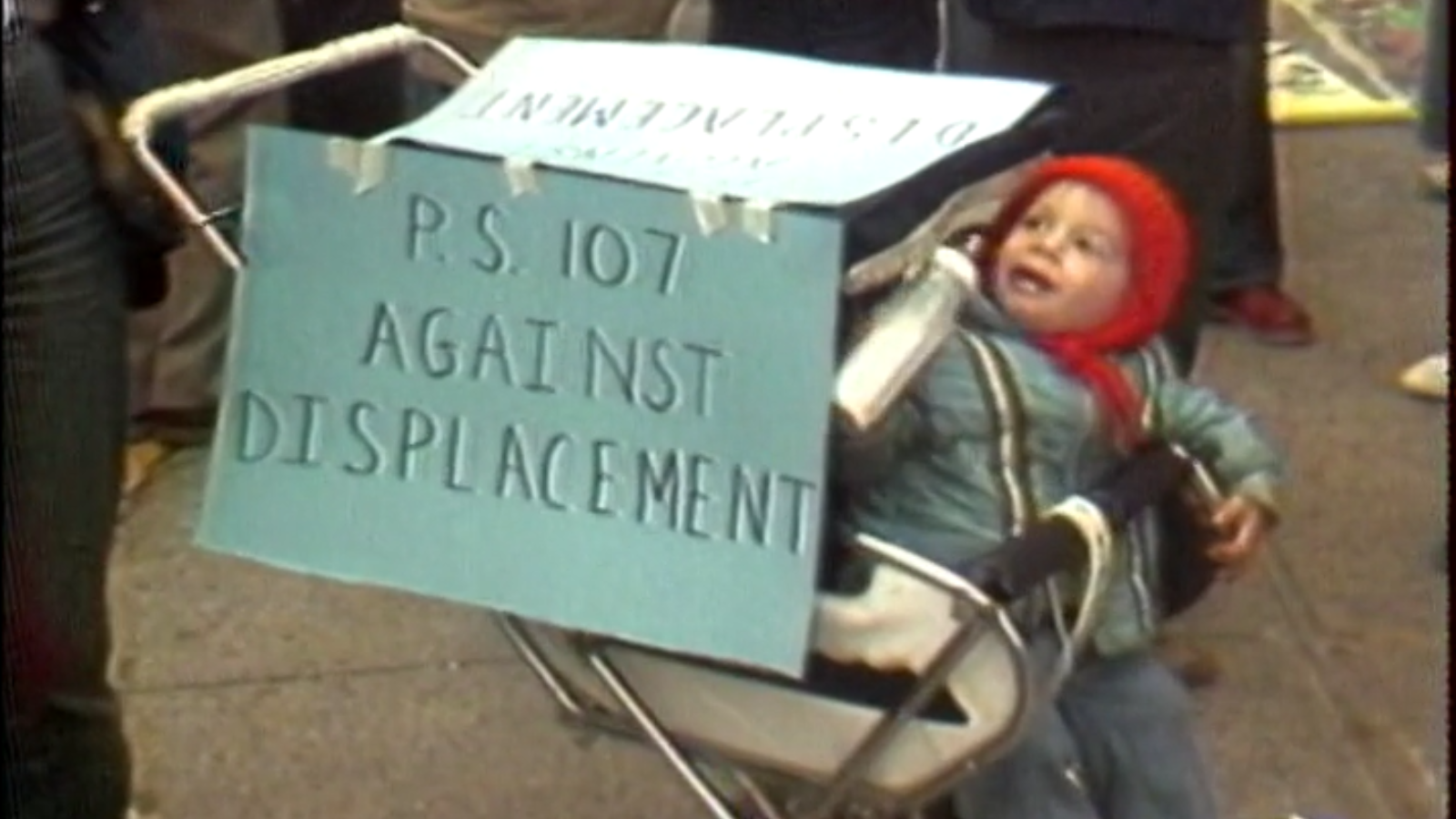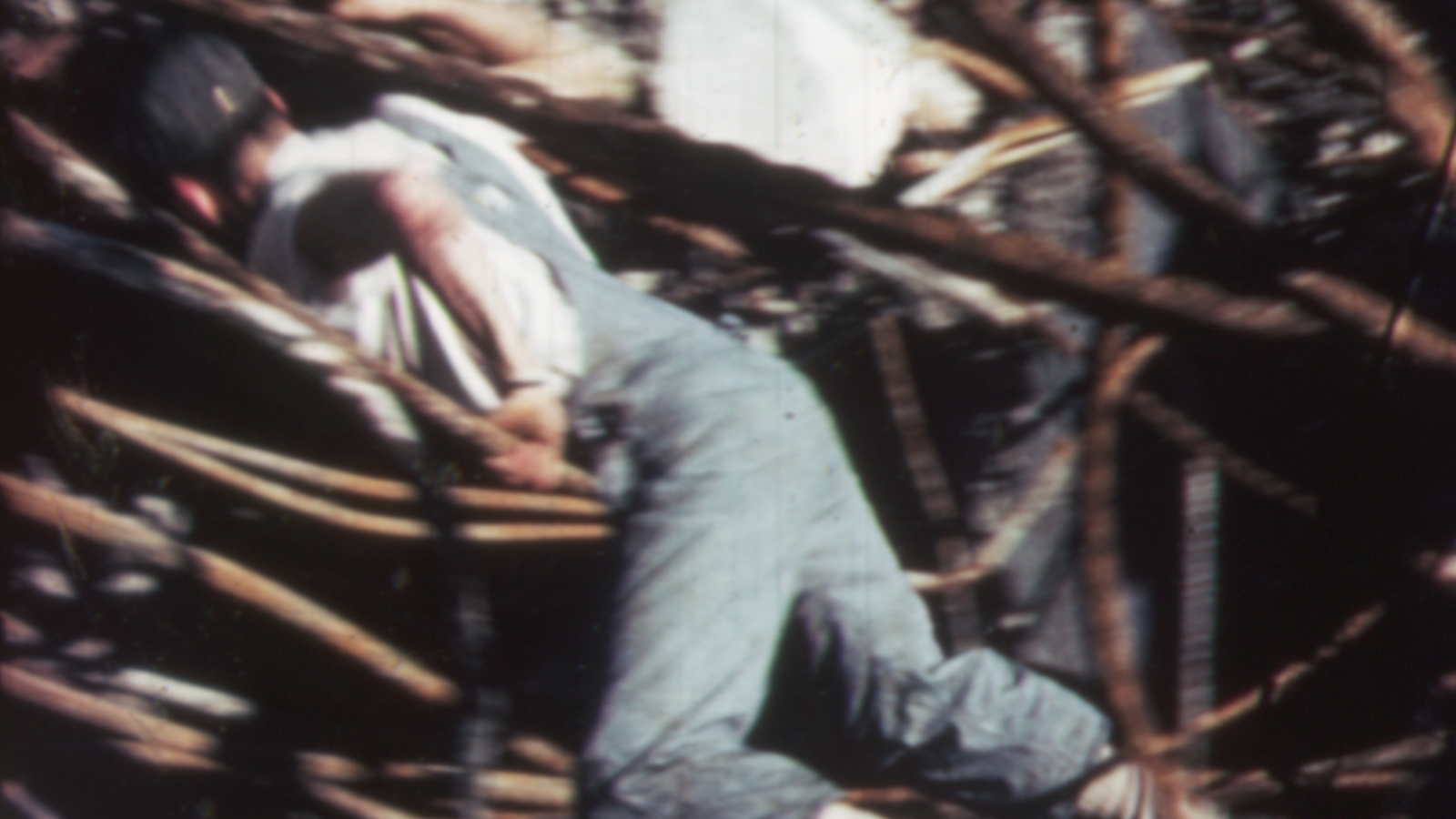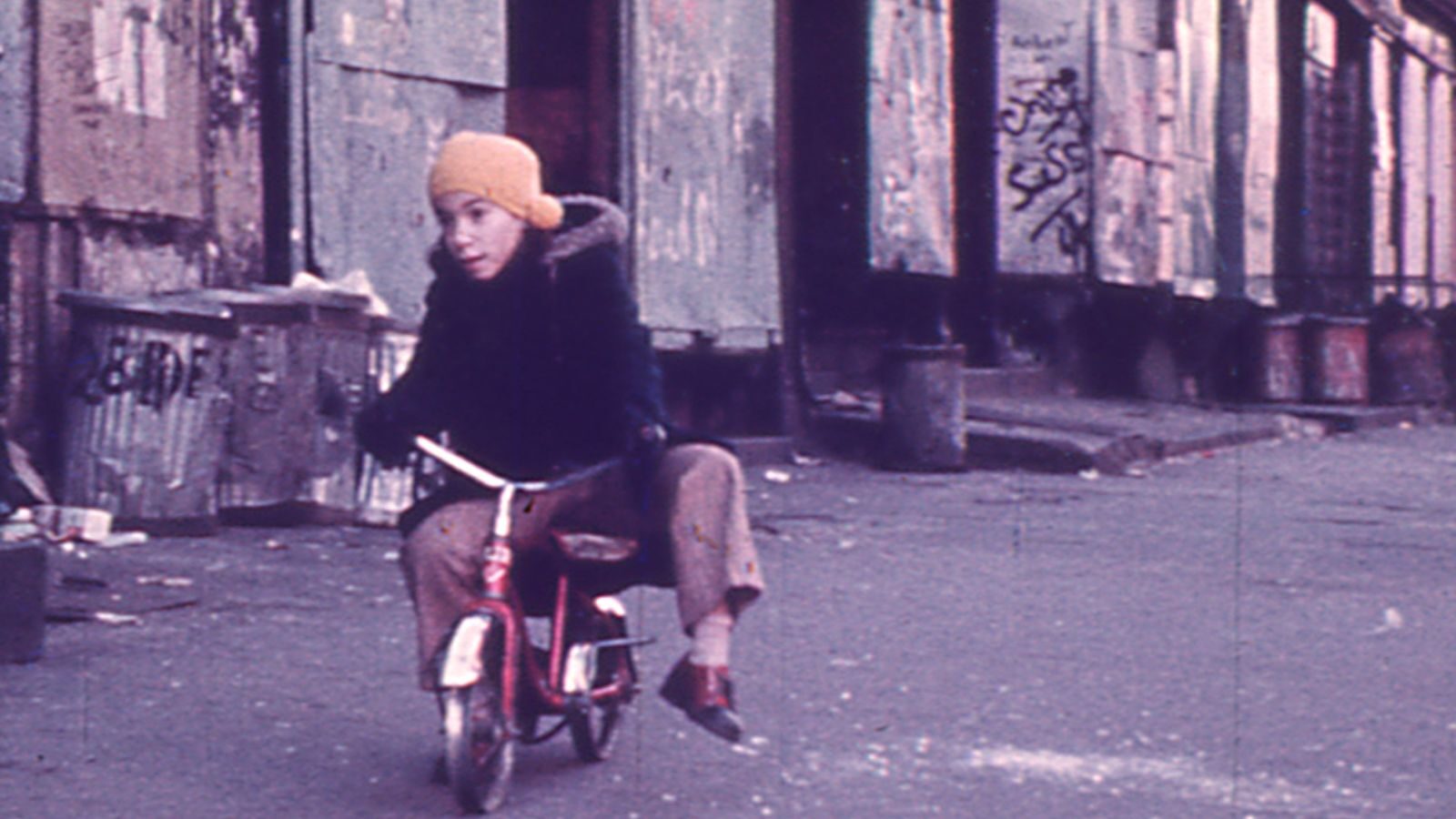Program 6: Gentrification and Urban Renewal, Part 2
Saturday, May 4
Venue
EBM Film Center (FBT)See more and save with a 3+ Film Package or All-Access Pass
Scotch Tape
Jack Smith, 1959, 16mm, 5m
Garbage
Newsreel, 1968, 12m
Dwellings
Charles Simonds, Rudy Burckhardt, 1974, 16mm, 13m
Where Can I Live — A Story of Gentrification
Erik Lewis, 1983, 33m
The second program of films gathered under “Gentrification and Urban Renewal” encompasses more works that document political, cultural, and personal reactions to the crises wrought by urban and socioeconomic flux. Jack Smith’s early work Scotch Tape (one of only two films deemed complete by the artist, along with his signature Flaming Creatures [1963]) is an anarchic and playful three-minute film that anticipates his later work through its collision of mugging performance, rubble-strewn mise-en-scène and willful embrace of fantastically oddball technical limitations. Shot among piles of debris on what was Manhattan’s San Juan Hill (and would soon become Lincoln Center), the film embraces the idiom of creative destruction that would characterize Smith’s peripatetic film and theater work.
Similarly concerned with this process but from a different vantage point is Newsreel’s Garbage, raw documentation of the action-oriented activist group Up Against The Wall Motherfucker, who are shown debating and then enacting the political stunt of transporting and dumping piles of trash found strewn on the streets of the Lower East Side into the recently opened Lincoln Center fountain. Beyond direct action, Rudy Burckhardt’s portrait of sculptor Charles Simonds transports us to a utopia wherein Simonds subtly reorients our relationship to the built environment through the creation of “Dwellings,” tiny handcrafted towns with homes for an imaginary civilization of “Little People” who are migrating through the streets of cities throughout the world. Simonds’s sculptures can still be found in various locales around the world (including inside and across the street from the Breuer Building on Madison Avenue). The program closes with a more direct and didactically forceful examination of the relentless pace of gentrification in a rapidly changing Park Slope: Erik Lewis’s Where Can I Live — A Story of Gentrification follows local residents’ resistance to the tide of rent hikes and evictions that follows what urban historian Suleiman Osman has called “the invention of Brownstone Brooklyn,” the gradual colonizing of diverse, predominantly working-class Victorian-era neighborhoods into firmly middle-class enclaves throughout the 1970s and 1980s.









